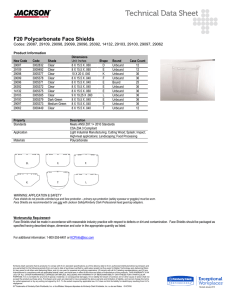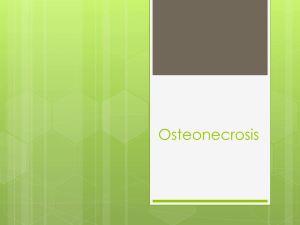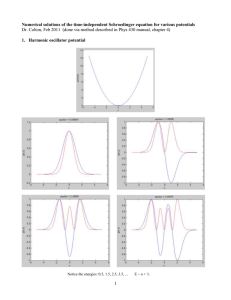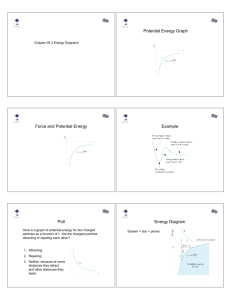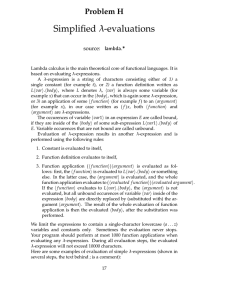Full article - Culture Unbound
advertisement
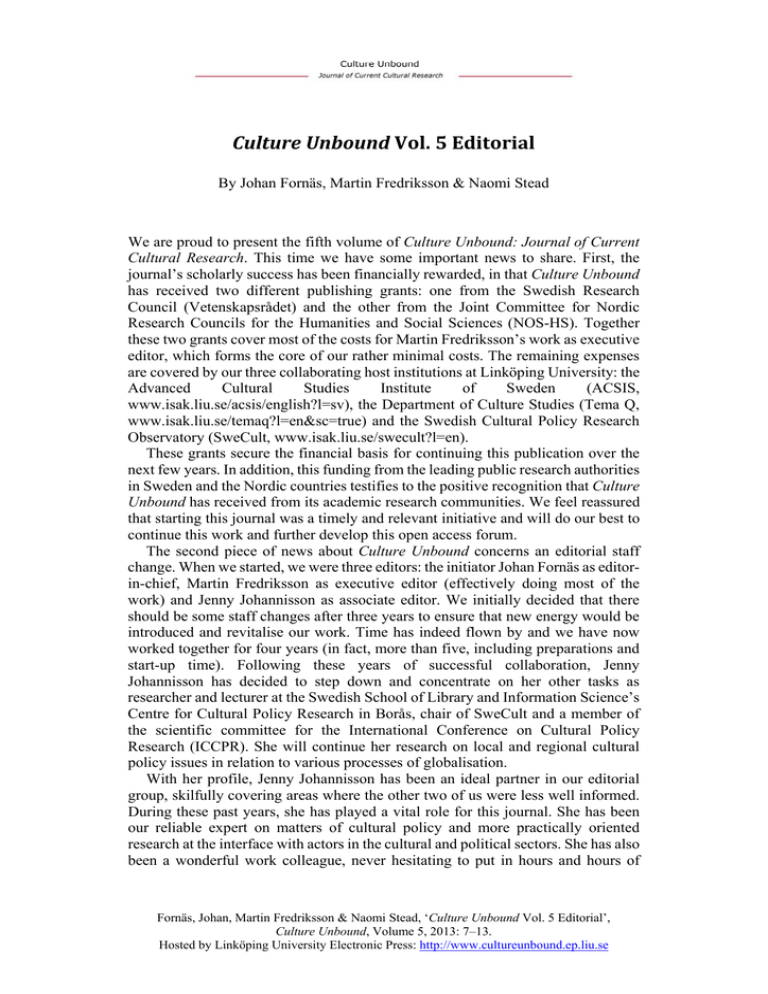
CultureUnboundVol.5Editorial By Johan Fornäs, Martin Fredriksson & Naomi Stead We are proud to present the fifth volume of Culture Unbound: Journal of Current Cultural Research. This time we have some important news to share. First, the journal’s scholarly success has been financially rewarded, in that Culture Unbound has received two different publishing grants: one from the Swedish Research Council (Vetenskapsrådet) and the other from the Joint Committee for Nordic Research Councils for the Humanities and Social Sciences (NOS-HS). Together these two grants cover most of the costs for Martin Fredriksson’s work as executive editor, which forms the core of our rather minimal costs. The remaining expenses are covered by our three collaborating host institutions at Linköping University: the Advanced Cultural Studies Institute of Sweden (ACSIS, www.isak.liu.se/acsis/english?l=sv), the Department of Culture Studies (Tema Q, www.isak.liu.se/temaq?l=en&sc=true) and the Swedish Cultural Policy Research Observatory (SweCult, www.isak.liu.se/swecult?l=en). These grants secure the financial basis for continuing this publication over the next few years. In addition, this funding from the leading public research authorities in Sweden and the Nordic countries testifies to the positive recognition that Culture Unbound has received from its academic research communities. We feel reassured that starting this journal was a timely and relevant initiative and will do our best to continue this work and further develop this open access forum. The second piece of news about Culture Unbound concerns an editorial staff change. When we started, we were three editors: the initiator Johan Fornäs as editorin-chief, Martin Fredriksson as executive editor (effectively doing most of the work) and Jenny Johannisson as associate editor. We initially decided that there should be some staff changes after three years to ensure that new energy would be introduced and revitalise our work. Time has indeed flown by and we have now worked together for four years (in fact, more than five, including preparations and start-up time). Following these years of successful collaboration, Jenny Johannisson has decided to step down and concentrate on her other tasks as researcher and lecturer at the Swedish School of Library and Information Science’s Centre for Cultural Policy Research in Borås, chair of SweCult and a member of the scientific committee for the International Conference on Cultural Policy Research (ICCPR). She will continue her research on local and regional cultural policy issues in relation to various processes of globalisation. With her profile, Jenny Johannisson has been an ideal partner in our editorial group, skilfully covering areas where the other two of us were less well informed. During these past years, she has played a vital role for this journal. She has been our reliable expert on matters of cultural policy and more practically oriented research at the interface with actors in the cultural and political sectors. She has also been a wonderful work colleague, never hesitating to put in hours and hours of Fornäs, Johan, Martin Fredriksson & Naomi Stead, ‘Culture Unbound Vol. 5 Editorial’, Culture Unbound, Volume 5, 2013: 7–13. Hosted by Linköping University Electronic Press: http://www.cultureunbound.ep.liu.se unpaid work. She has always been a thorough reader, carefully and efficiently editing articles in terms of language and style as well as argumentation and scholarly quality. We already miss her, but feel reassured that she continues to be among our loyal supporters as a permanent advisor and member of the editorial board. Her profound insights into current issues of culture, policy and research remain highly useful to us, and we particularly love her for always being prepared to come up with good ideas and keeping our spirits up. We thank her for all this, and wish her continued success in all she does. While we thus both wish that we could continue working with Jenny forever, the positive side of such an inevitable change in the editorial team is, of course, that it has given Culture Unbound a new associate editor, who will be able to contribute fresh ideas and perspectives to the journal. Naomi Stead is perfectly suited to these tasks. She is based at the School of Architecture at the University of Queensland in Brisbane, Australia, where she is a Senior Research Fellow at the ATCH (Architecture Theory Criticism History) Research Centre. Besides her academic research, she is also a writer of cultural and architecture criticism for various professional publications. Broadly speaking, her research interests concern the architectural humanities, intellectual history in architecture and the cultural studies of architecture (for further information, see www.uq.edu.au/atch/dr-naomi-stead). More specifically, her doctoral dissertation intersected the fields of architecture, museology and aesthetics, addressing the cultural politics of recent purpose-built social-history museums. Later work has examined the role and purpose of criticism in architecture and other arts, and the ‘cultural logic’ of architecture in the state of Queensland. Furthermore, she is conducting a major project on gender equity in the architecture profession. In a diverse range of publications, she has also touched upon state policy, media representations, gender studies, mythologies, authorship and experimental writing practices. Naomi Stead trained as an architect at the University of South Australia, receiving a Bachelor of Architecture with first-class honours before taking up a PhD scholarship under John Macarthur at the University of Queensland in 1999. Moving to Sydney in 2001, she worked at the School of Architecture at the University of Technology Sydney (UTS), where she taught for seven years. Having completed her PhD dissertation in 2004, Naomi was in late 2007 a Visiting Postdoctoral Fellow at the Advanced Cultural Studies Institute of Sweden, Norrköping, a position funded by the Swedish Institute. This was how we got to know her, and our paths have since crossed many times as she has been an active participant in our various cultural research conferences and other activities. We hope that Naomi Stead will feel at home as a Culture Unbound editor together with us. She will be able to further widen our international horizons and enrich our global networks. She will also help us develop the more aesthetic aspects of our publishing, including new and experimental modes of academic writing and presentation as well as working on the interfaces between scholarly and cultural practices. Her wide transnational experience includes not only research and criticism but also exhibitions and art projects, such as the 2009 exhibition ‘Mapping Sydney: Experimental Cartography and the Imagined City’, plus a series of short films made in 2009 for the UTS Equity and Diversity Unit, and the project [8] Culture Unbound, Volume 5, 2013 ‘Documentation: The Visual Sociology of Architects’. Furthermore, she is one of the co-founders and co-editors of the website Parlour: Women, Equity, Architecture (http://www.archiparlour.org/), which is the focus of her research work on gender equity in the architecture profession. Naomi is widely published as an art and architectural critic in Australia, writing regularly for Design Observer, Architecture Australia (of which she was a contributing editor, 2003–2012), Architectural Review Australia, Monument, Artichoke, PolOxygen and [Inside]. In 2008, she was awarded the Adrian Ashton Prize for Architectural Writing by the New South Wales chapter of the Australian Institute of Architects. She has extensive experience as an academic editor, having for three years edited the scholarly journal Architectural Theory Review, and in 2012 editing the book Semi-Detached: Writing, Representation and Criticism in Architecture (Uro: Melbourne, 2012). We have invited Naomi to briefly reflect on some aspects of her work that she feels are particularly relevant to Culture Unbound. Naomi Stead: Some Ideas for the Future It is my very great pleasure and privilege to join the editorial team of Culture Unbound, although I find that Jenny Johannisson leaves very large shoes to fill! The breadth of her interests and expertise, and her generosity with time and ideas, provides an aspiration I will strive to fulfil. Fortunately, I will be assisted in this by the two remaining collaborators, Johan and Martin, in whom I have found the wonderful combination of rigorous and exacting scholarly standards, coupled with a strong intellectual curiosity and openness to new research objects and approaches. All of these attributes, I think, have contributed to the outstanding quality of the first four volumes of Culture Unbound, and is certain to be continued from what I have seen of the exciting publishing schedule of this year and next. Amongst the burgeoning field of open access online journals, this one is, in my opinion, distinguished by excellent scholarship as well as an inclusive and lively editorial approach. These attributes suit my own intellectual approach since, as it will be clear from the introduction above, my scholarly work (and extra-scholarly artistic and critical practice) covers a wide ambit. Partly this springs from my background and education in architecture – a discipline that is inherently interdisciplinary, and also has the same ‘magpie’ tendencies of other creative disciplines, to collect intriguing ideas from a range of fields, then arrange and curate them in new ways. While at times I have wrestled with the implications of this, of being a curious generalist in an academic world that tends to value driven specialists, eventually I realised that the field of cultural research really needs both: on the one hand it needs careful and close specialisation in highly specific areas, and on the other hand it needs creative leaps between diverse ideas and observations, across distinct disciplines and methods. It is the latter that I try to pursue in my work, and that I find to be one of the most satisfying aspects of intellectual life. I also hope that it might be a potentially valuable contribution I could make to Culture Unbound. So in considering some themes and ideas that I might bring to bear in the coming years of my association with the journal, drawing on my architectural background, I thought first (and perhaps rather obviously) of the intersections, interrelations and interactions between cultures and their spatial settings. Architects consider buildings objects of culture in their own right, while they are also trained to design spaces in which living cultures can flourish and literally ‘take place’. For this they need a delicate sense of how spatial formations can either encourage or discourage an engaged, active sense Culture Unbound, Volume 5, 2013 [9] of inhabitation on the part of building occupants and users. They also need an appreciation of how spaces become vessels for narrative – for a human drama played out between material things as well as immaterial affects and attachments. The notion of occupation has been given additional dimensions and currency by political events of recent years. But the implications of occupation go well beyond the public domain, entering far into the private lives of people and objects, and into their practices and actions. Cultural research springing from a literary or media studies perspective has sometimes dismissed or ignored the spatial environment in which activities take place, or taken the setting to be too contingent and contextual to be a valid or achievable object of study. But spaces have effects, and I think there is more to be said about occupation, and about where things take place. This is by no means a new approach; indeed the ‘spatial turn’ has arguably been superseded by the ‘material turn’ in present intellectual fashion. I would argue though that architectural approaches have long combined the spatial and material – the built environment makes spaces through material means; it is about materiality on many levels – not only about this chair and this window, but also the material objects and practices with which spaces are inhabited and occupied. There are thus many objects and ideas still to be pursued, in how culture is materialised and practised in space – whether examining specific practices in particular kinds of spaces, at a range of scales (cities, streets, street corners; houses, bedrooms; workplaces, boardrooms; high-rise car parks, the interiors of cars), or spatial metaphors (familiar ideas of ‘topography’ or ‘territory’ or ‘field’ or ‘world’), or spatial concepts and atmospheres, I think there are still stones left unturned. I also wonder about the possibilities of new innovative methods for observing, recording and evidencing cultures in spaces – from micro-scale ethnographic studies of specific practices, to visual research and its kaleidoscopic potential for recording rich data instantaneously, to new digital methodologies, which are developing as rapidly as online participatory culture itself, to experimental writing practices, and other creative and practice-based methods – it seems to me there is much scope for inventive, illuminating and exciting cultural research to be done, and to be published in Culture Unbound. The 2012 Volume The past year has been a period of growth for Culture Unbound, both in regard to published articles and popularity. Our statistics show that an increasing number of readers are finding their way to Culture Unbound. The journal’s website had about 37 000 visitors in 2012, which is a huge increase compared to 2011 with approximately 22 000 visits. The traffic peaked in October and November, just after the release of the theme section ‘Self-care Translated into Practice’, when we had more than 8500 visitors over a period of two months. The most downloaded thematic sections were ‘Fashion, Market and Materiality’, published in April 2011, with 1168 downloads, followed by ‘Signs of the City/City of Signs’, from December 2009 (1033 downloads), and ‘Shanghai Modern’, from February 2012 (864 downloads). These figures confirm that while new issues attract many readers, our old publications have a long lifespan, which contributes to a steady and longterm growth in readers. Most visits came from Sweden, the United States, China, the United Kingdom and Germany and we are pleased to see that we reach a lot of readers not only outside Scandinavia but also outside the English-speaking world. [10] Culture Unbound, Volume 5, 2013 As for the content, the journal continues to grow. Over the past year, we have published four thematic sections, comprising 34 articles and more than 750 pages. We are, however, convinced that we are expanding in more than simply a quantitative sense. The choice of topics tells of a growing variety of subjects and perspectives. The last volume opened with Justin O’Connor and Xin Gu’s theme section on China and modernisation: ‘Shanghai Modern: The Future in Microcosm?’ This was followed by the theme section ‘Culturalisation at an Australian–Swedish Crossroads’, which derived from a research project about culturalisation and globalisation conducted in collaboration between the Department for Culture Studies at Linköping University and the Institute for Culture and Society at the University of Western Sydney. The subsequent theme, ‘Self-care Translated into Practice?’ analysed everyday implications of the recent discourses of the individual’s responsibility for his or her own medical well-being. The last thematic section of 2012, ‘Objectification, Measurement and Standardization as Social Processes’, applied an interdisciplinary perspective to how contemporary trends towards increasing quantification of social life relate to issues of governmentality, management, education, identity politics and artistic innovation. These achievements have also been acknowledged by Open Humanities Press, which included Culture Unbound in its archive in 2012, as well as by the two aforementioned funding agencies: Vetenskapsrådet and NOS-HS. One of those who evaluated Culture Unbound for the latter pointed out: During its four years of existence the journal CU has found and firmly marked its profile. Its structure and coverage are flexible and future-oriented. In this respect it hardly overlaps with other journals. And even if so, the open accessibility of the articles and abundance of references they provide rather cross-fertilizes the international scholarly discourse. In my view, by widening its global network of authors and referees the journal will further strengthen its position both in the international academia and in wider intellectual circles which are interested in the changes that occur in postmodern society. We are, of course, glad that the reviewer commended our striving towards a broad interdisciplinary scope, but we are particularly pleased to see that he or she acknowledged our attempts to attract and include authors from a wider geographical field: ‘the academic dialogue that CU has opened with Chinese and Australian scholars is definitely welcome. One can only encourage the journal to continue to expand in the chosen direction exploring e.g. Russian, Indian and Japanese scholarly fields’. In our first four years, Culture Unbound has published authors from twenty-one different countries and four continents, but as the reviewer correctly pointed out, there remains work to be done on that front, and in the coming years, we hope to be able to present contributions not only from Russia, India and Japan, but also from Africa and South America. In the Pipeline for 2013 As with our previous volumes, we continue to work with thematic sections. These often have a background in some kind of research conference or other academic Culture Unbound, Volume 5, 2013 [11] event. Publishing a set of articles on various interrelated topics means making them public and at the same time also shaping a public for them. Readers visiting the Culture Unbound website are like flâneurs who gather in a square and share a common experience. That is why we plan to make some significant changes to the website over the coming year. Apart from improving accessibility and navigability, we also hope to make better use of the possibilities of interactivity that the medium offers and widen circulation and discussion of the articles we publish. In late modern times, public spaces are increasingly becoming mediatised, even though there was always a mix of physical and virtual communication: the early bourgeois public sphere relied heavily on the printed press, while today’s new social movements cannot be reduced to pure media events. All the talk of the Arab Spring as a Twitter or Facebook revolution should, for instance, not make anyone forget that marching in the streets or meeting in the same room remains as essential in the Middle East in 2012 as in Paris in 1789. The mediatisation of the public sphere (or multiple, differentiated but intertwined spheres of publics) has changed the conditions for social interaction, but the physical arenas for interaction remain important – for scholarship as well as for politics, culture or everyday life. Media history shows how there is always a dense and two-way interplay between on the one hand co-presence at the agora or in the various houses and rooms used for social events and on the other hand the mediated publics gathering as readers, listeners, viewers or interactive ‘prosumers’. This all comes back to the importance of acknowledging the interrelations between culture and its spatial settings that form a focal point for Naomi’s research. This is thus also true for academic research. Culture Unbound is a mediated open access forum that enables readers to appropriate intellectual contents across any distance, but the texts we publish have always been shaped by individuals interacting on all levels. The theme sections make this particularly clear as they often present texts of which at least some tend to derive from a particular academic event: a seminar, workshop or conference in which researchers have met up to discuss and interpret their findings. This is true for many of our previous themes, but also for this first article release of 2013. Together with this editorial, we have published as well two sets of articles deriving from the conference ‘Current Issues in European Cultural Studies’, which was held in Norrköping in June 2011. The first is edited by Ferda Keskin, Johan Fornäs and Martin Fredriksson, and consists of five reports that document the conference’s attempt to map the current state of cultural studies in Europe through a series of panel discussions about cultural research in different geographic regions. The second is a more conventional thematic section, entitled ‘Feminist Cultural Studies’ and edited by Hillevi Ganetz and Fanny Ambjörnsson. It focuses on the encounter between feminism and cultural studies, which became one of the most important and appreciated issues of the conference. Together they reflect some of the heterogeneity of subjects whose coexistence can characterise the contemporary field of cultural research. The coming volume looks to be the most comprehensive so far and we have a number of exciting, engaging and highly relevant subjects planned. In June, this first release will be followed by a thematic section on ‘Communication Culture in Practice’ by Samantha Hyler that explores the practical applicability of cultural [12] Culture Unbound, Volume 5, 2013 research in different contexts. Later this year, we plan to discuss issues, such as ‘Popular Culture’, edited by Roman Horak; ‘Protests and Social Movements’, edited by Madeleine Hurd; and ‘Therapeutic Solutions and Discourses of SelfEmpowerment’, by Alan Apperley, Mark Jones and Stephen Jacobs. In forthcoming volumes, these are to be followed by theme sections on topics, such as ‘Sustainability’, ‘Capitalism: Current Crisis and Cultural Critique’, ‘Encyclopaedias in Transition’ and ‘Writing at Borders’. Culture Unbound thus maintains its expansion into new intellectual territories and we hope that you will join us for another year of academic exploration and contribute to the future discussion. Johan Fornäs is editor-in-chief of Culture Unbound and professor at the Department of Media and Communication Studies at Södertörn University in South Stockholm. With a background in musicology, he is a board member of the Bank of Sweden Tercentenary Foundation and was between 2004 and 2008 vice-chair of the international Association for Cultural Studies. His current research has two main strands, dealing with mediatisation on the one hand and on the other with identities, symbols and narratives of Europe. E-mail: johan.fornas@sh.se Martin Fredriksson is executive editor of Culture Unbound. At the Department of Culture Studies (Tema Q), Linköping University, he is working on a three-year project on the ideology of piracy, funded by Riksbankens Jubileumsfond. His doctoral dissertation dealt with Swedish copyright history, and he has also spent a year as a visiting scholar at Massachusetts Institute of Technology, conducting a study on copyright and pirate parties in North America. E-mail: Marin.fredriksson@liu.se Naomi Stead is a Senior Research Fellow at the Research Centre ATCH (Architecture | Theory | Criticism | History) in the School of Architecture at the University of Queensland, Australia. Her research interests broadly lie within the architectural humanities and the cultural studies of architecture, in its production, mediation and reception. E-mail: n.stead@uq.edu.au Culture Unbound, Volume 5, 2013 [13]
